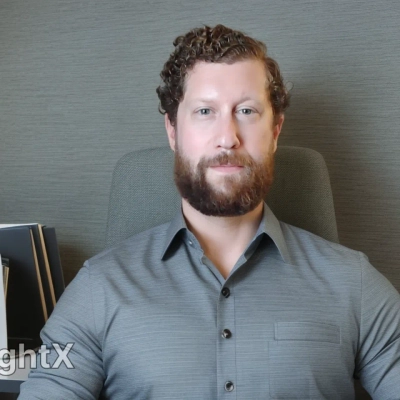9 Ways to Address Mental Health Stigma When Clients Seek Support
Mental health stigma continues to be a significant barrier for those seeking support, but this article presents nine practical approaches backed by expert insights to address these challenges effectively. Drawing from established techniques such as reframing help-seeking behaviors, utilizing statistical normalization, and explaining neurological perspectives, these strategies provide mental health professionals with actionable methods to reduce client shame and resistance. Healthcare providers will discover how simple adjustments to their communication and intake processes can create transformative experiences for clients navigating their mental health journey.
Reframing Help-Seeking as Strength Through Healthcare Comparison
I directly reframe their act of seeking help as a sign of profound strength in the first few minutes of our first meeting. Many people walk in feeling defeated or ashamed, and my immediate goal is to dismantle that narrative by explicitly praising their courage.
The most effective technique is to immediately compare mental healthcare to physical healthcare. I'll often say something like, "It takes a lot of strength to be here, and I want to acknowledge that. We would never judge someone for seeing a doctor about their heart or their lungs, and the brain is the most complex organ we have. Taking care of it is simply a part of being healthy."
This approach does two things at once. First, it validates the patient's courage, which helps build an immediate rapport. Second, it logically normalizes the situation by placing it firmly within the context of total-body wellness, not as a separate or shameful character issue.
It shifts the entire emotional tone of the first appointment. The patient begins to see themselves not as a person with a flaw, but as a proactive individual taking a responsible step toward better health. This clears the way for an open, honest therapeutic relationship from the very beginning.

Story Recovery Process Honors Experience Over Stigma
When clients first come to me for trauma work or mental health support, I often hear messages like "I'm too ashamed" or "I don't deserve help." In my experience, that internalized stigma usually grows out of earlier experiences where people were taught that asking for help means they have failed or that they should be strong enough to manage on their own. I think it is essential to address these beliefs before meaningful therapeutic progress can begin.
One approach I use to normalize seeking help is to reframe the session as a story recovery process rather than labeling it as therapy or treatment. I explain that our work is not about fixing something broken. Instead, it is about giving voice to experiences that were never fully acknowledged. I often say, "You are not here because you are damaged. You are here because your story deserves to be heard." This simple change in language allows clients to see themselves in a more compassionate light.
In my opinion, this reframing often shifts clients from shame to relief. When they understand that help is about reclaiming and honoring their experience, they begin to see it as an act of strength. This approach consistently opens the door to deeper healing and encourages clients to engage more fully with the therapeutic process.

Parts Work Separates Critical Self From Core Self
We can recognize stigma as an internalized self part. When this self critical self part takes the driver's seat in our psychology, we have depression or anxiety. But prior to therapy, the person is a fish in water: they don't see this, there's little insight, it is so familiar it seems normal and unquestioned, to an automatic thought.
We can ask what part of you is saying that? Are there any other parts? How would you respond to a friend going through this same thing? We start to differentiate from that self part and see it objectively. We can explore the client's tone and posture as it changes between this self critical self part and their healthy, core self. Can we imagine what that critical part looks like if it were a separate person in the room? Where do you feel it in your body when it starts to take control of your headspace?
Psychodynamic routes might include bridging from this to earlier life experiences that were internalized and shaped this self part. We can focus on the language - "does that sound familiar to anything you've heard before?" Or somatic - "that feeling in your body, let it grow just enough to jog your memory of earliest times you felt that." Clients internalize these things for different reasons. To feel close to someone from their past, to maintain the sense of security or strength they felt with or from that person, because they believe it is self protective and would be reckless to give it up, identification with the aggressor or Stockholm syndrome, and many more.
Parts work is very useful, with IFS being contemporarily predominant. "Let's ask what that self critical part needs. What does it want, what is it doing here and what is its role? What does it think would happen if it stopped performing it's role?" We find this domineering, critical part is misguided but well intended, attempting to protect us, but ultimately fearful and in need of a strong core self to soothe it.
This process involves cathecting, which means energizing and strengthening, the core self. Bringing the core self to the driver's seat. The critical part can be a backseat driver, but cannot take the steering wheel.
Of course psycho education can play a role in reducing stigma and simply time in therapy, non judgementally taking about the problem helps internalize the therapists acceptance.

Statistics Normalize Mental Health Needs as Common
The stigma around mental health disorders is a huge problem that prevents many people from seeking help, remaining in treatment, and obtaining employment (https://jamanetwork.com/journals/jamanetworkopen/fullarticle/2787280). Although the stigma has decreased around certain mental health issues in recent years due to an increase in public discourse, it remains a huge barrier for many people.
When I can sense that a client is feeling a lot of shame about their mental health, I might share with them a few things to help normalize the help-seeking process. I tell my clients that about 1 in 5 adults struggle with mental illness (https://www.nimh.nih.gov/health/statistics/mental-illness), and celebrate with them that they have taken a huge step in seeking support for their mental health because many people never do. I would also emphasize that humans are social beings and that we aren't designed to do things alone, and that we all need help at times in our lives. We might feel a lot of internalized pressure to do it all by ourselves, including improving our mental health, which is a uniquely Western idea. While it's great to be independent and self-sufficient to a degree, I think sometimes we can get extreme with this line of thinking and we need to be reminded that there needs to be a healthy balance between self-sufficiency, receiving help from others, and helping others in return.

Nervous System Regulation Removes Mental Health Labels
I address stigma by shifting the focus from "mental health" as a label to nervous system regulation as a human need. Most clients don't see stress, burnout, or over performance as mental health issues, but they immediately recognize the toll those patterns take on their body. One technique that helps normalize seeking help is teaching them to notice stress signals, like shallow breathing, tension, or racing thoughts, as biology, not weakness. When clients see their struggles as the body doing its best to adapt, it removes shame and makes support feel practical instead of stigmatized.

Therapy as Growth Investment Rather Than Crisis
When clients first come to me, stigma often shows up as shame, hesitation, or the fear that seeking therapy means they're "weak" or "failing." I normalize this right away by framing therapy as a sign of strength—it takes courage to face hard things directly. I remind clients that if they had a broken bone, they'd go to a doctor without hesitation; mental health deserves the same care.
One technique I use is sharing the concept that therapy isn't just about crisis—it's also about growth. High-performing professionals, athletes, and leaders rely on coaches and mentors all the time. When I compare therapy to that kind of support, it helps clients reframe seeking help as a proactive, smart investment in themselves rather than something to be ashamed of. That shift in perspective breaks stigma down and opens the door to meaningful work together.

Confidentiality Builds Trust From First Meeting
In our initial sessions, I prioritize discussing confidentiality so clients understand that what they share remains private, with specific exceptions like risk of harm to themselves or others, or cases involving neglect or abuse. I also emphasize that seeking support demonstrates courage and strength rather than weakness. Many people are currently in therapy, though not everyone discusses it openly. I encourage clients to share as much or as little as they feel comfortable with, whether with me or others. This helps normalize seeking help and lets clients know they aren't alone in their experience. Simply acknowledging that mental health challenges are common, while respecting their privacy, creates a foundation of trust right from our very first meeting. Building this trust makes it easier for clients to open up and feel supported throughout their journey.

Warm Touchpoints Throughout Intake Reduce Shame
As the Practice Manager for a fully virtual mental health practice, I often see stigma show up before the first session — during intake. One way we address it is by intentionally shaping the tone of every touchpoint: our forms, emails, and phone conversations all reflect warmth, compassion, and clarity.
We avoid overly clinical language and instead validate that reaching out is brave. For example, our intake process includes messaging like: "It's okay to feel unsure. You don't have to have the perfect words — we'll figure it out together." Normalizing uncertainty and softening expectations helps reduce shame.
Stigma begins to lift when people feel seen from the very first interaction — and that's something everyone on the team, not just the therapist, plays a role in.

Brain Maps Show Root Causes Beyond Personal Failing
I address stigma by showing people the root cause of symptoms on a brain map. It's powerful to see that anxiety, depression, or attention struggles aren't personal failings — they're patterns the brain picked up from life experience. Once people see that, the shame lifts, and they understand that it's something they can change.


